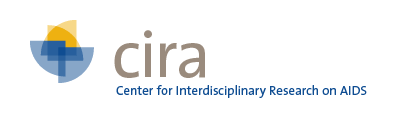| Title | Use of total lymphocyte count for monitoring response to antiretroviral therapy. |
| Publication Type | Journal Article |
| Year of Publication | 2004 |
| Authors | Schreibman, Tanya, and Gerald Friedland |
| Journal | Clinical infectious diseases : an official publication of the Infectious Diseases Society of America |
| Volume | 38 |
| Issue | 2 |
| Pagination | 257-62 |
| Date Published | 2004 Jan 15 |
| ISSN | 1537-6591 |
| Keywords | Anti-HIV Agents, Antiretroviral Therapy, Highly Active, CD4 Lymphocyte Count, Chemoprevention, Disease Progression, Drug Monitoring, Forecasting, HIV Infections, Humans, Lymphocyte Count |
| Abstract | The CD4 cell count has become a key laboratory measurement in the management of human immunodeficiency virus (HIV) disease. In ideal situations, HIV-infected persons are followed up longitudinally with serial CD4 cell counts to determine disease progression, risk for opportunistic infection, and the need for prophylactic or therapeutic intervention. However, the use of the CD4 cell count in resource-limited settings is often not possible because of lack of availability and high cost. Thus, other laboratory markers have been proposed as substitutes for the CD4 cell count. The data regarding the clinical utility of the total lymphocyte count (TLC) as a potential surrogate marker of immune function in patients with HIV disease are examined. The role of the TLC in the initiation of antiretroviral therapy and opportunistic infection prophylaxis, as well as the role of the TLC in monitoring the response to antiretroviral therapy, are also addressed. |
| DOI | 10.3109/00952990.2011.568081 |
| Alternate Journal | Clin. Infect. Dis. |


